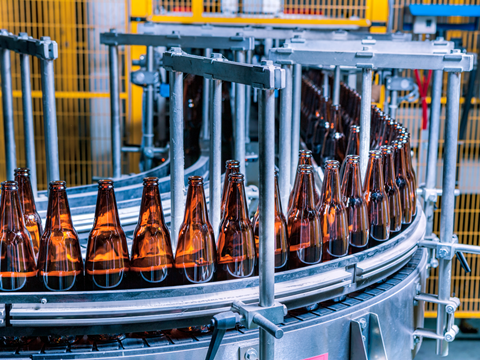
As incoming legislation incentivizes reuse, what factors are holding bottles back – and how could water-based adhesives help? Elizabeth Staab, global packaging sustainability manager at H.B. Fuller, talks challenging logistics, collaboration, carbon footprints, and more in the latest edition of our ‘In Conversation With…’ series.
Under the Packaging and Packaging Waste Regulation (PPWR), most beverage packaging in the EU will be held to a minimum reuse rate of 10% by 2030. In that context, can you outline some of the key challenges the industry faces regarding reusable glass bottles?
The beverage industry faces several challenges with the reuse and refill model for glass bottles. Firstly, return rates need to be as high as possible to achieve system efficiencies.
A second key factor is whether operators are working within an open vs. closed pool, meaning they only get their own bottles or those from a pool of producers back to clean and refill.
The distance empty bottles have to travel back is a deciding factor as to whether the system is environmentally favourable. Open pool bottle models are particularly efficient and environmentally favourable due to their scale and reduced transport distances vs. closed loop bottle pools, where bottles could be transported across the country, rendering savings from reusing glass bottles vs. new ones meaningless.
Leading on from that, which labelling adhesive technology would you recommend and why?
Our water-based adhesive technology provides several benefits for the reuse and refill model. In contrast to traditional Casein technology, our new labelling technology is highly efficient in the wash-off process with 0% label carry-over, which can be a great pain point for producers. Also, within a closed loop system we have shown with customers that they can reduce detergent levels and washing temperatures generating benefits for their sustainability goals.
Overall, our new labelling technology is superior in many ways, as we are demonstrating with customers every day across the globe. With our technical experts, customers can adjust the labelling step and reduce adhesive consumption by up 25%; that is adhesive that needn’t be washed off when the bottle is returned.
Also, comparing the carbon footprint of our technology to standard Casein the difference is staggering, as Casein is a natural protein from cow milk, which is exposed to great seasonal quality fluctuations, and with an impressive carbon footprint. Our technology also has a significantly reduced footprint, because we have finetuned our production process, with 0.73 kg CO2 eq/kg compared to a Casein labelling product at 3.13 kg CO2 eq/kg.
Additionally, our labelling technology is zinc and borax free, a further benefit when considering wastewater treatment.
In that case, why hasn’t your water-based adhesive technology been adopted more widely?
The beverage industry is very conservative and rather reluctant to move away from traditional Casein-based adhesives that have been in use for many years. Again, our application specialists are key to demonstrating the benefits of this technology by closely working with line operators to prove operational efficiencies and performance benefits of our new technology.
To provide the best possible results across the globe, we have developed a global product range to cater to different environmental conditions and consumer habits, ensuring that our adhesives meet diverse needs. Our global customers appreciate this regionalization.
The beverage industry is under increasing pressure to embrace sustainability-minded solutions, especially as the PPWR comes into force. How will the law impact the market for reusable glass bottles and water-based adhesives?
The PPWR is a game-changer. It sets ambitious reuse and recycling targets, encouraging beverage producers to adopt reusable systems, glass bottle and with other containers.
With stricter regulations on packaging waste and extended producer responsibility (EPR) policies, companies are under pressure to find sustainable solutions that align with circular economy principles.
Our new water-based technology fits well within this framework because they support efficient reuse processes in addition to offering carbon footprint benefits and overall sustainability goals.
Looking ahead, is there potential for expanding the use of water-based adhesives in the beverage industry?
The future looks promising. As more brands commit to reusable packaging, the demand for sustainable labelling solutions continues to rise. Innovations in water-based adhesive technology will continue to enhance their performance, making them an even more attractive option for the industry.
In the current economic climate, operational efficiencies, consumption savings and strong performance for beverage brands are key. Our new labelling technology provides superb condensation and ice water resistance for consumer satisfaction with the brand. This is essential in a very competitive environment.
Any final thoughts on what industry stakeholders should prioritize moving forward?
Collaboration is key. Beverage producers, adhesive manufacturers, and all players along the supply chain must work together to create streamlined, efficient reuse systems.
Investing in research, pilot projects, and infrastructure improvements will ensure that reusable glass bottles – and the adhesives that support them – become a central component of a truly sustainable beverage industry going forward.
To learn more about food and beverage labelling with H.B. Fuller, click here.

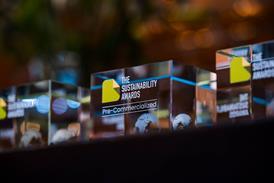
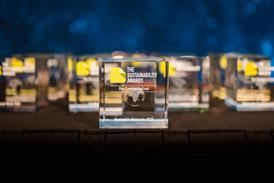
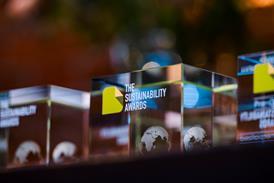
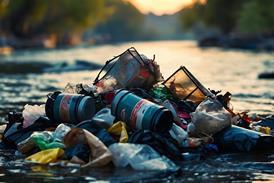
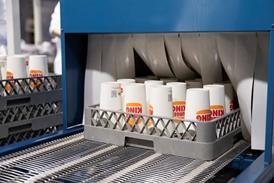












No comments yet